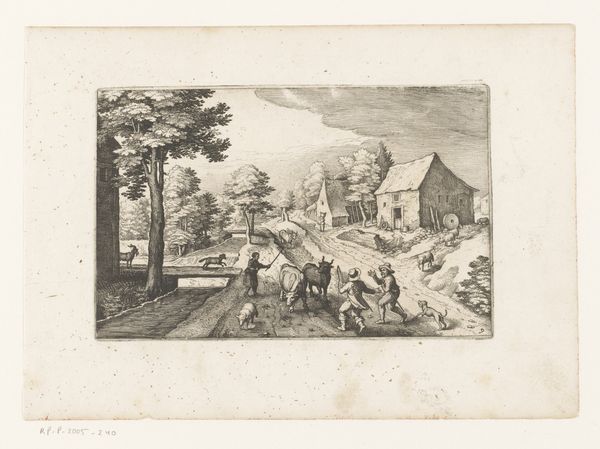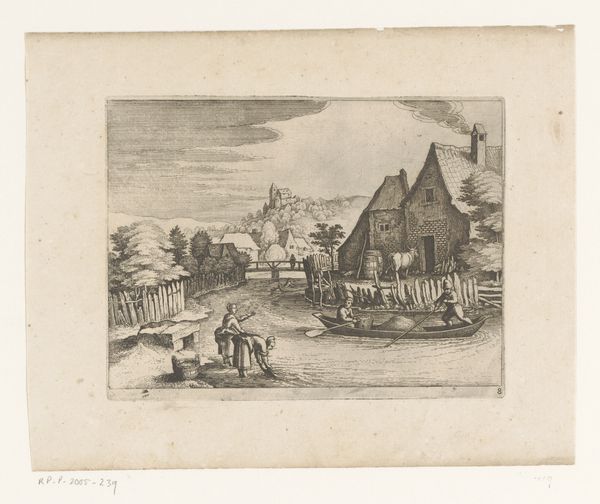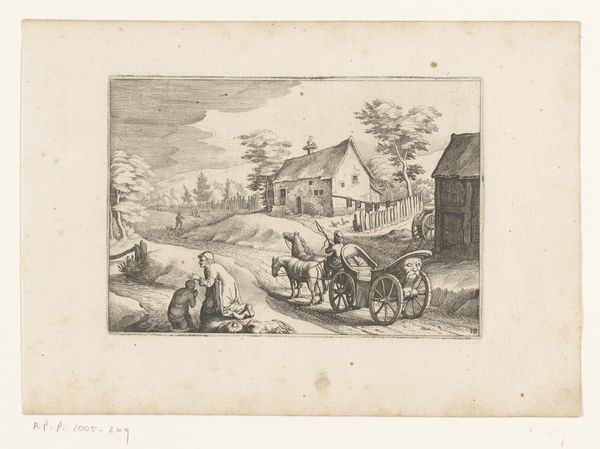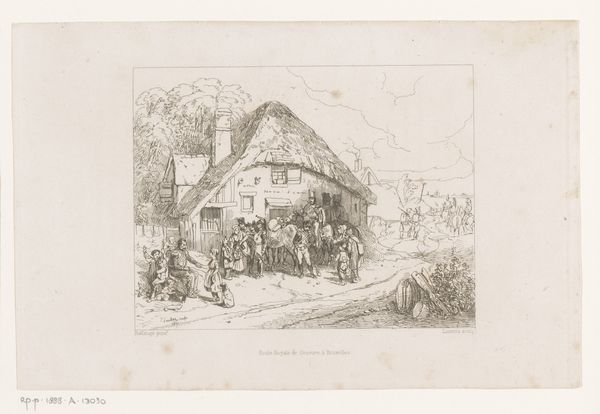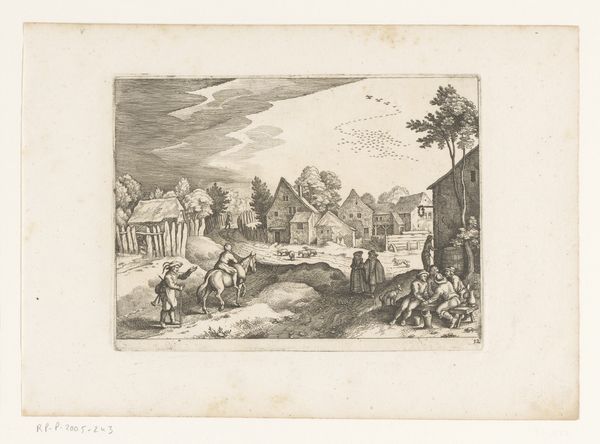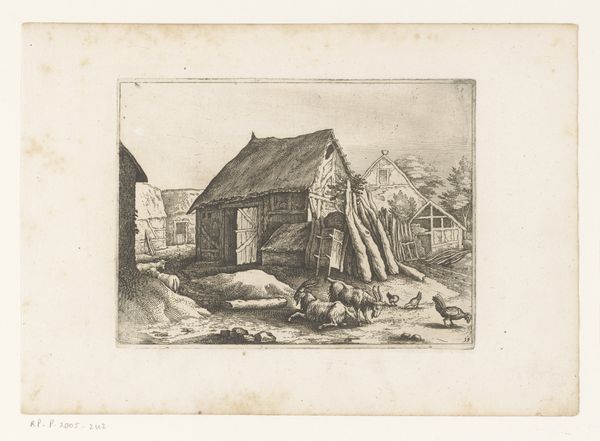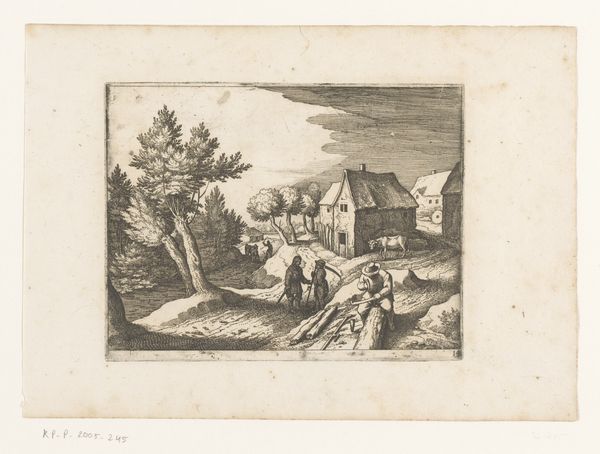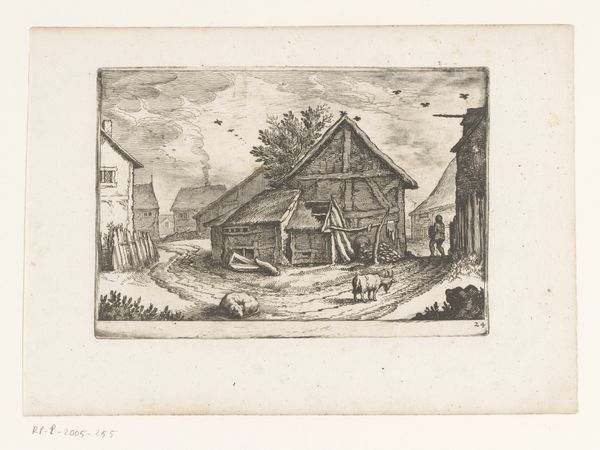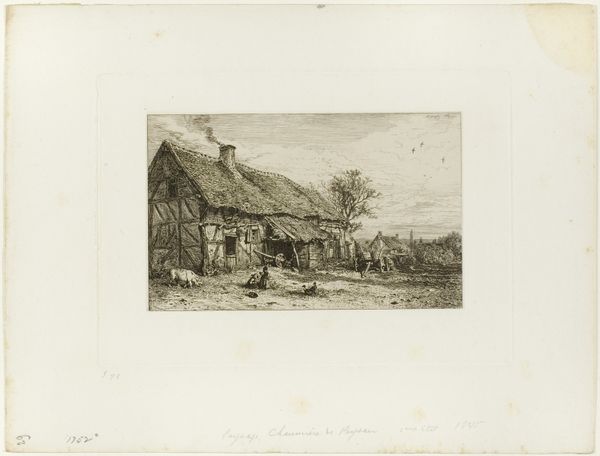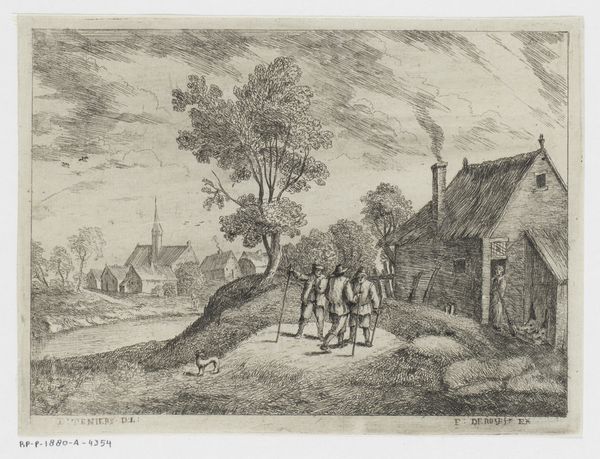
drawing, print, etching, paper
#
drawing
#
baroque
#
dutch-golden-age
# print
#
etching
#
landscape
#
paper
#
genre-painting
Dimensions: height 122 mm, width 165 mm
Copyright: Rijks Museum: Open Domain
Curator: This is "Village Scene with Two Resting Travelers," a 1620 etching by Matthäus Merian the Elder, currently held at the Rijksmuseum. Editor: There's an unexpected stillness to it. The details are so finely etched, you almost feel as if you are disturbing the rest these figures are seeking. Is that their donkey beside them? Curator: Precisely. It's a vignette of 17th-century daily life, deeply rooted in Dutch Golden Age aesthetics with that embrace of everyday moments. The village scene in itself becomes a tableau of existence. Note, the traveler and resting figures form a familiar iconographic scene. Editor: The choice of depicting them during rest does suggest something broader about societal attitudes. Is Merian saying something about leisure, class, or perhaps about the demands of labor? Curator: Possibly all three. Rest can be seen as an earned reward. Yet also think of this etching’s cultural function. Through compositions like this one, a sense of place, community, and identity would have been visualized and reinforced. The home place became more valued by seeing images of the home. Editor: And even idealized? While daily life might seem to have proceeded at a much slower, "simpler" pace, I imagine reality for most was hardly this picturesque. Curator: Of course not! Consider the landscape: nature has a place, but is carefully bounded to and curated around buildings. Even wilder areas reflect prosperity rather than poverty in the world that is constructed for us. Merian subtly encodes what mattered most in Dutch culture through this type of imagery. The genre becomes idealized reality itself. Editor: These kinds of scenes often serve as powerful nostalgic anchors too, whether intentional or not. Thank you. It’s interesting how a seemingly simple village image like this can reflect so many layered social meanings when we start to dig deeper. Curator: Indeed, that’s precisely why I find it a compelling window into understanding a culture's evolving self-perception.
Comments
No comments
Be the first to comment and join the conversation on the ultimate creative platform.
